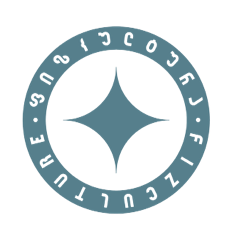Myth N1
If you want to lose weight, you should do cardio exercises
Yes, of course, cardio increases your heart rate, so your body burns more calories than anaerobic exercise (body weight training, weight training), but strength training builds muscle or helps your body maintain muscle mass, the more muscle you have, the more calories your body will burn, both during cardio exercises and at rest position.
Myth N2
Strength training increases muscle mass too much and there is a danger of looking like a bodybuilder.
In order to increase muscle mass, you must eat in a calorie surplus (gain weight) and at the same time engage in strength training, and regardless of the perfect execution of all this, this process requires years and doing everything with perfect accuracy. In addition, it is literally impossible for a woman to build muscles like man, The level of testosterone in the body determines how the body will respond to strength training.
Myth N3
You can eat more calories on a workout day…
Never count the calories burned by exercise, it cannot be calculated accurately. Those devices that show you the calories burned by exercise always write a higher number (burned calories) than it actually is. If your goal is to lose weight, find your caloric deficit and take the same number of calories both on the day of training and on the day of rest, and counting how much you burn during physical activity or at rest does not make sense.
Remember, nutrition is most important for weight loss.
Myth N4
Stretching before exercise is a guarantee of injury prevention…
No research supports this idea, getting injured depends on the correct execution of the exercises and your body structure. Of course, for the purpose of prevention, you can do stretching before exercise, but also be sure to observe your body, if you feel discomfort in any part of your body during exercise, change the exercise or spend more time warming up that area. The main thing is to study your own body.
Myth N5
Cardio machines, watches, applications show exactly how many calories a person has burned during physical activity...
As mentioned earlier, no device will display this data correctly, even those that allow you to enter as much personal information about yourself as possible. Burned calories doesn't just depend on your age, gender and weight, the most important thing is your metabolic rate, even details like how you slept at night, and were you were born matters.
Myth N6
Do you want a flat stomach? Do as many ABS exercises as possible...
All people genetically have abdominal muscles, which are hidden in the fat on the abdomen, so if the fat is not burned, the muscles will not appear. Only abs training cannot burn fat, to burn fat you need a caloric deficit, i.e. weight loss. Unfortunately, weight loss does not happen locally on one part of the body, a complex approach, deficient nutrition and physical activity is required.
Myth N7
2 hours must pass after training to eat, otherwise you will gain weight or you will not be able to lose weight...
If your goal is weight loss and you are eating in a calorie deficit, eat whenever you want, even within 20 minutes of exercising. When a person is in a deficit, the fat burning process cannot be stopped by this action, to say nothing of weight gain.
Myth N8
Protein must be taken within 30 minutes after exercise, it helps to build or maintain muscle...
It doesn't matter when you take your protein, the important thing is to get the amount you need throughout the day.
Myth N9
If you don't sweat during your workout, your workout isn't complete...
Sweating is an imprecise way to measure effective exercise. Many human bodies are designed to cool their own body.
Myth N10
A favourite phrase for many is No pain, No gain
While it's normal to feel uncomfortable during exercise, it's not normal to feel pain. Many athletes and people in the fitness industry live by the slogan "no pain, no gain".
If you feel pain during exercise, stop immediately to avoid injury. Hard work and pain is not the same thing.



